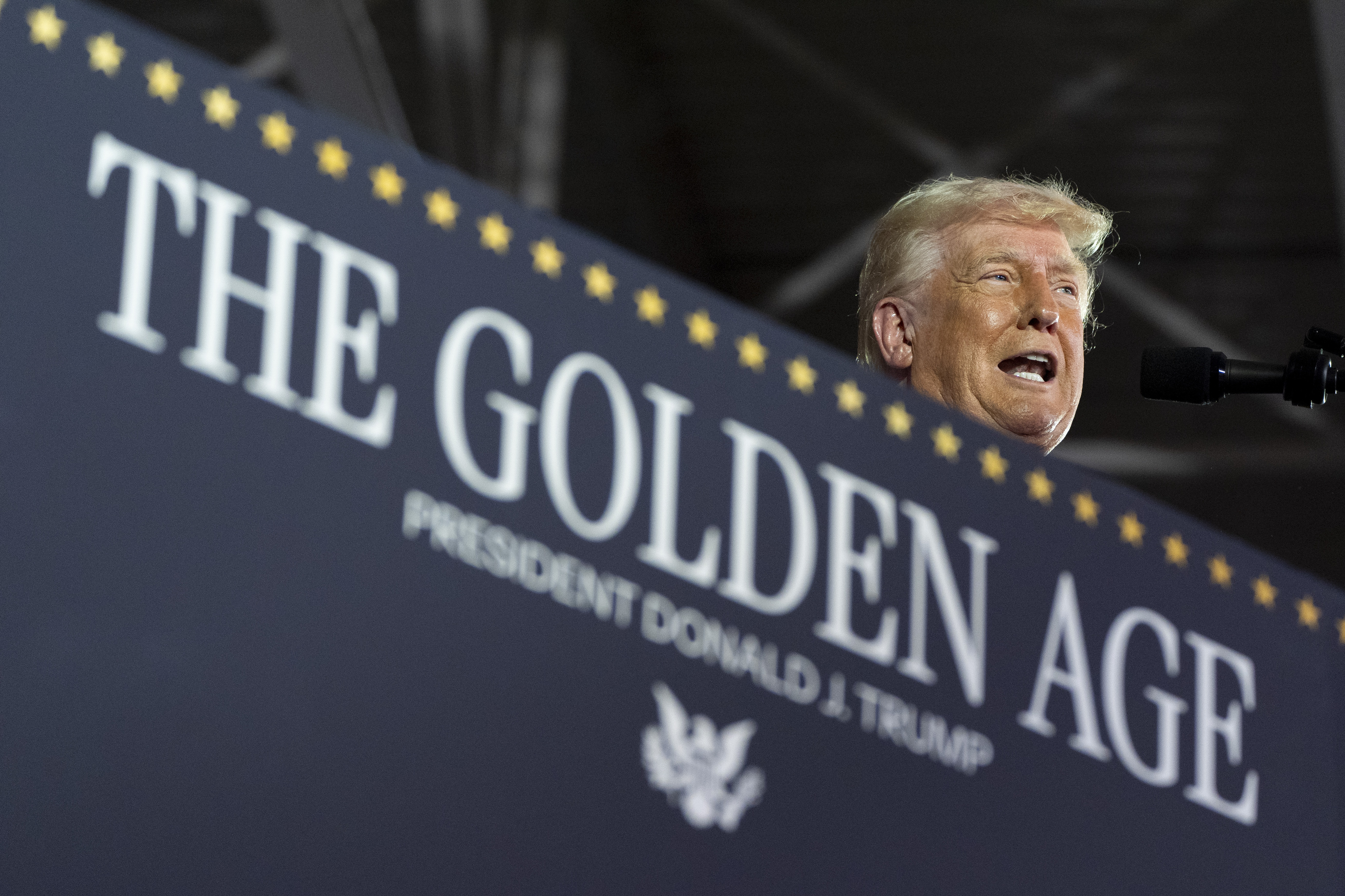Donald Trump inherited a growing economy, with solid growth, good employment data, and inflation on a moderation path after two bad years that left a deep discontent among the population due to the cost of living. On January 20, the Republican leader took office and shortly after unleashed a total trade war with the rest of the world, marked not only by tariffs but by an absolute disregard for relations with partners, allies, and neighbors. Through drastic decisions, changes of opinion, and reversals. By pressuring all economic agents, creating uncertainty, and ignoring warnings and requests from companies and analysts. The first reaction came from the stock markets, with trillions of dollars destroyed. The second, from the bond market, with a rise in bond yields that forced a new turn after the euphoria of the "day of liberation." The third, this Wednesday, came from macro data, with a three-tenths contraction of the GDP.
The Department of Commerce has reported that the Gross Domestic Product (GDP) of the United States —the value of all goods and services produced in the economy— fell by 0.1% (0.3% at an annualized seasonally adjusted rate) in the first quarter. The most pronounced decline since the first quarter of 2022 and a huge blow, after the economy had grown by an annualized 2.4% in the last quarter of 2024, the last of Joe Biden.
The president's nervous reaction has been to blame his predecessor. Trump won the elections largely due to inflation and the cost of living, telling citizens that if Kamala Harris won, there would be an immediate Wall Street crash and the economy would collapse.
"This is Biden's Stock Market, not Trump's. I did not take office until January 20. Tariffs will soon take effect, and companies are starting to establish themselves in the United States in record numbers. Our country will thrive, but we have to get rid of the 'Biden excess.' This will take time, it has nothing to do with tariffs, only that he left us with bad figures, but when the boom begins, it will be like no other. Have patience!!!" pleaded the president to his followers in a message on his social network after seeing the Dow Jones, Nasdaq, and S&P500 plummet by 2% upon learning the data.
Today's figure is a problem for Trump, but the reality is complex. The contraction is technically real, but Commerce will make two more revisions later and could correct it. Moreover, if one looks at the skyrocketing statistics of spending and investment, what is probably happening in the US is a slowdown, not a sharp decline. "The decrease in real GDP in the first quarter mainly reflected an increase in imports, which are considered a subtraction in GDP calculation, and a decrease in public spending. These fluctuations were partially offset by increases in investment, consumer spending, and exports," explains the economic analysis office.
What defines what has happened is the technical way in which GDP is calculated, but there is no doubt that it is a consequence of accelerated imports and the anomaly that has occurred in recent weeks due to tariffs.
Between January and March, net exports, the difference between imports and exports, weighed down growth and subtracted nearly five percentage points from the overall GDP, given that imports surged by 41.3%, as everyone who could tried to anticipate tariffs. "The overall decline exaggerates the weakness, as much of it was due to an advance in activity induced by tariffs," say analysts from Wells Fargo.
A similar situation occurs with consumer spending levels, which decelerated significantly in the first quarter, growing at an annual rate of 1.8%, compared to 4% at the end of last year. Partly due to uncertainty and because over 60% of Americans have part of their wealth invested in stocks, but also because snowstorms that hit southern states in January forced many buyers to stay home.
Consumer confidence indices, for both businesses and citizens, have been at very low levels since March, but at the moment there are no statistics clearly showing a huge reduction in real spending. Not enough in any case for a contraction that signals the path to recession.
The American economy is large, strong, and has shown enormous resilience in the last five years, during the pandemic and after the Ukraine war. By 2025, it was growing much more than other developed economies, unemployment was at 4%, and 456,000 new jobs were created in the first quarter, compared to 628,000 in the last quarter of 2024. And inflation, which has been a major concern and actually threatened to cause a recession in 2023 and 2024 due to Federal Reserve containment measures, was on the desired path.
All eyes are currently on the Fed. Trump has repeatedly attacked its chairman, Jerome Powell, demanding interest rate cuts. And now, despite the contraction being more of a technical consequence of how GDP is calculated and the weight of excess foreign purchases to prevent price hikes, Trump is expected to increase pressure. Because he has turned using symbols as an essential part of politics into an art. And few symbols are stronger than a red GDP figure coming from solid growth.
